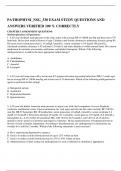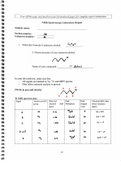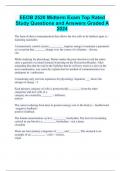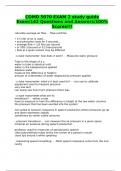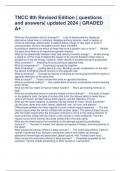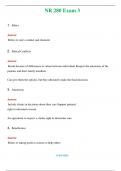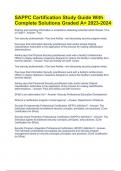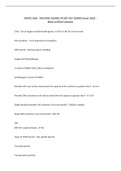Exam (elaborations)
PATHOPHYSI_NSG_530 EXAM STUDY QUESTIONS AND ANSWERS VERIFIED 100 % CORRECTLY
- Course
- Institution
PATHOPHYSI_NSG_530 EXAM STUDY QUESTIONS AND ANSWERS VERIFIED 100 % CORRECTLY CHAPTER 5 ASSESSMENT QUESTIONS Student Questions (10 questions) 1. A 65-year-old black male presents to the clinic today with average BP of 148/88 mm Hg and heart rate of 70 beats/min. He has past medical histo...
[Show more]
